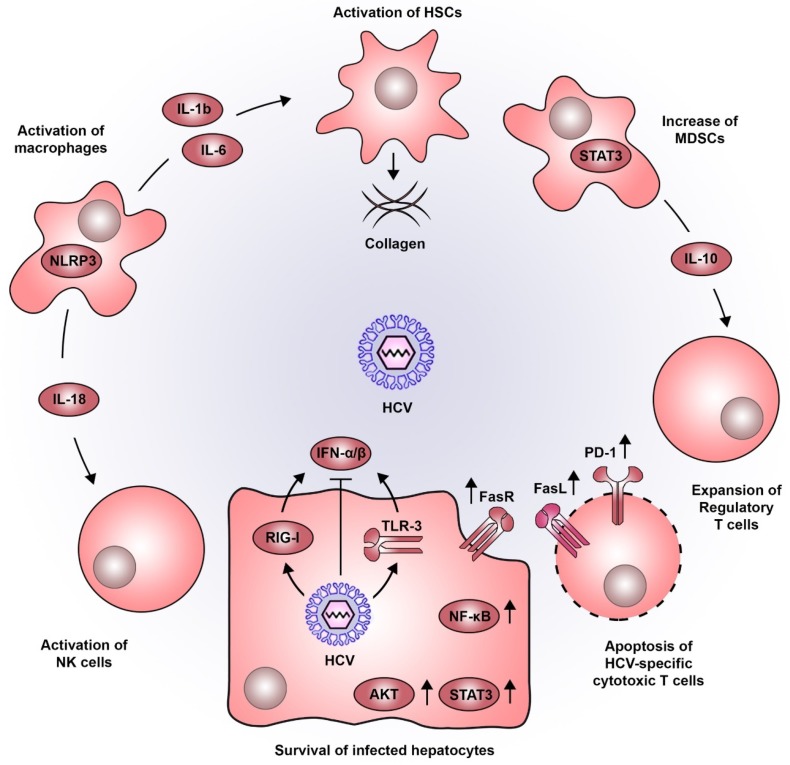Figure 2.
Pro-oncogenic inflammatory microenvironment induced by HCV. HCV infection in hepatocytes is detected by viral sensors such as RIG-I and TLR3, leading to the production of type I IFNs. As for most viruses, HCV has developed a wide variety of strategies to dampen this antiviral response. The persistent inflammatory environment in the liver combined with the action of viral proteins, establishes a sustained activation of signaling pathways associated to cell survival (e.g., STAT3, AKT, NF-κB and FasR). The sensing of HCV-infected hepatocytes by macrophages triggers NLRP3 inflammasomes, inducing the secretion of IL-18 which activates NK cells. Moreover, IL-1b and IL-6 produced by macrophages favor the activation of HSCs which are central components in the progressive deposition of collagen associated to liver cirrhosis. Additionally, STAT3 also plays a role in the development of MDSCs which produce IL-10 and favor the expansion of regulatory T cells. This altered immune response, is further accentuated by the increased expression of PD-1 and FasL, impairing cytotoxic T lymphocyte function and inducing their apoptosis. Abbreviations: AKT, AKT serine/threonine kinase; FasL, Fas ligand; FasR, Fas receptor; HCV, hepatitis C virus; HSCs, hepatic stellate cells; IFN, interferon; IL, interleukin; MDSCs, myeloid-derived suppressor cells; NF-κB, nuclear factor kappa B; NK, natural killer; NLRP3, NOD- LRR- and pyrin domain-containing protein 3; PD-1, programmed cell death 1; RIG-I, retinoic acid-inducible gene I; STAT3, signal transducer and activator of transcription 3; TLR3, toll like receptor 3.

